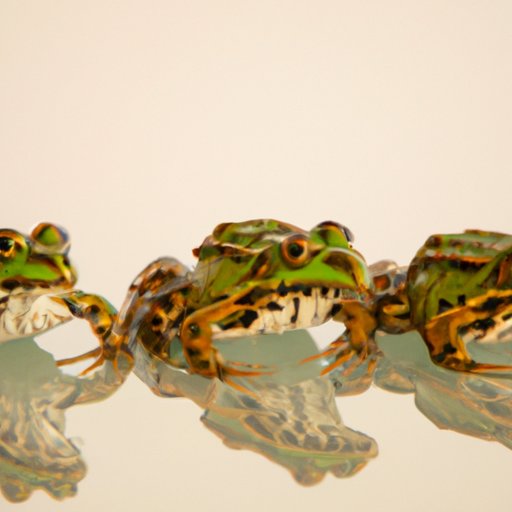Introduction
Frogs are fascinating creatures that can make great pets. But like any other pet, they need proper nutrition to stay healthy and thrive. A frog’s diet is composed of various components, including protein, insects, vitamins, and minerals. It is important to understand what should be included in a frog’s diet in order to provide them with optimal nutrition.
What is the Ideal Diet for a Frog?
In order to provide your frog with the best possible care, you must ensure that their diet is nutritionally complete. There are several components that should be included in a frog’s diet. Protein is an important part of a frog’s diet, as it helps them grow and develop properly. Insects such as crickets, mealworms, and waxworms are a good source of protein for frogs. Additionally, vitamins and minerals are important for maintaining a frog’s health. Calcium is particularly important for frogs, as it helps them develop strong bones and muscles.
Creating a balanced diet for your frog is essential. The exact amount of each component will vary depending on the species of frog. However, in general, a diet should include a variety of protein sources, vitamins, and minerals. In some cases, a supplemental vitamin and mineral supplement may be necessary to ensure that all nutritional needs are met.

Common Mistakes in Feeding Frogs
When feeding your frog, it is important to avoid making certain mistakes that can have a negative impact on their health. Overfeeding is one of the most common mistakes made when feeding frogs. Too much food can lead to obesity, which can cause health issues such as organ failure or respiratory problems. Additionally, not providing variety in their diets can lead to boredom and lack of interest in eating. Lastly, not providing adequate nutrition can lead to deficiencies that can affect a frog’s health.
How to Identify Signs of Malnutrition in Frogs
If a frog is not receiving the proper nutrition, there are certain signs that can indicate malnutrition. Physical signs of malnutrition include weight loss, lethargy, and lack of appetite. Additionally, behavioral changes such as decreased activity, hiding, and aggression can also be signs of malnutrition. If you notice any of these signs, it is important to consult a veterinarian right away.
Conclusion
A healthy diet is essential for frogs to remain healthy and happy. It is important to understand the components of a frog’s diet and how to create a balanced diet for them. Additionally, it is important to avoid common mistakes such as overfeeding, not providing variety, and not providing adequate nutrition. Finally, it is important to be aware of the signs of malnutrition so that you can take action if needed. By following these guidelines, you can help ensure that your frog receives the nutrition they need to thrive.
(Note: Is this article not meeting your expectations? Do you have knowledge or insights to share? Unlock new opportunities and expand your reach by joining our authors team. Click Registration to join us and share your expertise with our readers.)
